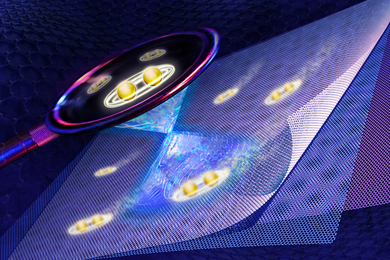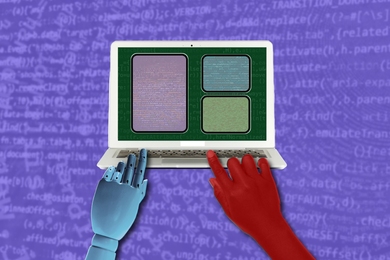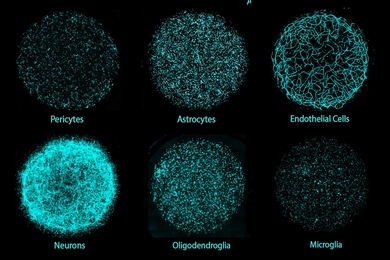Professor Ann M. Graybiel and colleagues, using the latest available technology, have found evidence that rats' brains undergo dramatic changes after they learn how to find a reward in a maze.
As the rats learned a specific sequence of movements that led to a reward, researchers could actually see for the first time the striking changes that occurred in the response pattern of neurons in the brain structure known as the striatum. The striatum is located in the basal ganglia, which are three large nuclei of nerve clusters buried below the cerebral hemispheres in the forebrain.
The study by Dr. Graybiel, the Walter A. Rosenblith Professor of Neuroscience at MIT, and colleagues appeared in the November 26 issue of Science. Their results support the idea that during habit learning, the brain codes whole sequences of behavior as units or chunks that can be triggered by specific contexts. For instance, a green light will trigger a driver to depress the gas pedal and start to drive.
Professor Graybiel studies the brain circuits that support habitual actions, hoping to learn how a healthy brain functions and what can go wrong with these circuits in disorders such as Tourette's syndrome, obsessive-compulsive disorder (OCD) and even addiction to cocaine.
"Our results demonstrate large-scale changes in the recruitment and firing patterns of these neurons. [This] demonstrates that an overall restructuring of neuronal response patterns occurs in the sensorimotor striatum as procedural learning occurs," Professor Graybiel wrote with colleagues Mandar S. Jog of the London Health Sciences Center in London, Ontario; Yasuo Kubota, postdoctoral associate in MIT's Brain and Cognitive Sciences Department; Christopher Connolly of SRI International; and Viveka Hillegaart of the Karolinska Institute in Sweden.
LEARNING THE ROPES
The researchers studied rats that were trained to run down a T-shaped maze and respond to a tone indicating that they should turn left or right to find a piece of chocolate.
As the rats' ability to navigate the maze became more automatic, their neural response to the left or right turn was downplayed, while the start and end of the sequence evoked a stronger neural response. This accentuation of the beginning and end may relate to Parkinson's disease, in which patients have difficulty starting and stopping movement sequences or in breaking into one sequence with another.
"This pattern is consistent with the hypothesis that the sensorimotor striatum develops an action template for triggering the procedure as a behavioral unit," the paper's authors wrote. "Our observation of a gradual and prolonged change in striatal responses suggests a neural correlate of the slow acquisition characteristic of habit learning."
AN AUTOMATIC RESPONSE
The basal ganglia's work falls somewhere in between that of the cortex, which is active in the "here and now" skills like talking, thinking and learning, and the brain stem, which controls automatic body functions like breathing and blinking.
For a long time, the function of the basal ganglia remained a mystery. It is known that they are involved in the control of movement.
Professor Graybiel, whose research team is responsible for much of our current knowledge about neurotransmitter systems and gene expression in the basal ganglia, and her colleagues have uncovered evidence that the basal ganglia are tied to much more than motor control.
They see that the basal ganglia's main inputs come from cognitive parts of the brain such as the cortex, the seat of higher thought processes such as perception and analysis. A set of neural responses that form a unit or "chunk" of behavior may begin in the cortex, go to the striatum and back to the cortex to initiate an unconscious action. When cues triggering the action go awry because of a disorder like OCD, the person uncontrollably performs repetitive actions.
Understanding the mechanism at work may lead to cures for the biochemical abnormalities that can affect it, Professor Graybiel said.
This work was supported by the Grayce B. Kerr Fund, the Poitras Charitable Foundation, the Walter A. Rosenblith Professorship of Neuroscience, the National Institutes of Health, the Tourette Syndrome Association, the Medical Research Council of Canada, the Royal College of Physicians and Surgeons of Canada and SRI International of Menlo Park, CA.
A version of this article appeared in MIT Tech Talk on December 8, 1999.





